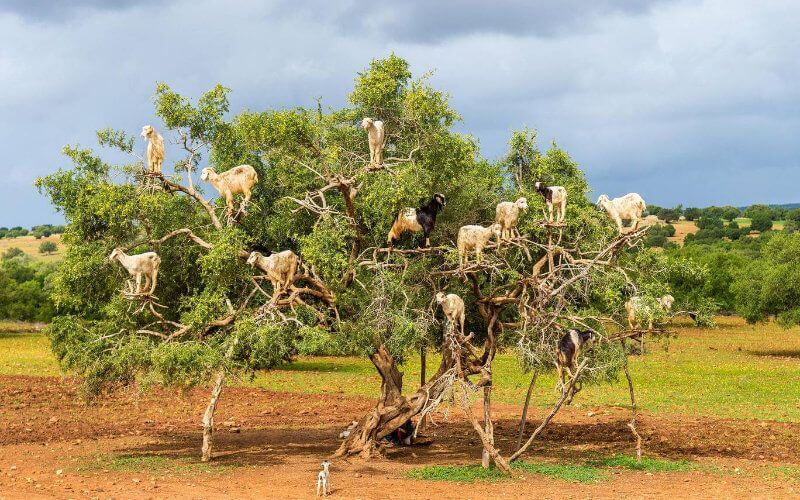Drought and Exodus Threaten Morocco’s Argan Industry, Jeopardizing Livelihoods

The era when the argan tree brought glory to Morocco, made many young Moroccan women dream, and supported many families is over.
In Morocco, the argan industry is struggling due to drought and rural exodus. "Before, there were so many fruits that we would leave some, we couldn’t pick them all," explains Aïcha, a 67-year-old Moroccan woman met near the Moroccan village of Azrarag, about 30 kilometers east of Agadir, along with two other sexagenarians, Zohra and Fadna. This widow and her two friends have been working for the local Tamaynoute cooperative since its creation in 2004. They used to simply collect the argan nuts that fell at the foot of the trunks. "Usually, we just have to pick them up," Aïcha explains. "But this year, there’s almost nothing. So we’re trying to force them to detach!"
After a few hours of work, Aïcha, Zohra and Fadna head back home. Each of them has a barely filled basket on their head. "Before, there were so many fruits that we would leave some, we couldn’t pick them all," Aïcha explains. "But now, it’s over. We’ve been through hard times before, but it’s starting to get complicated for me, as it’s my only source of income. Thank God, my son is a temporary plumber."
Argan has experienced its glory years since the late 1990s. Morocco accounts for the vast majority of the world’s argan oil production - 4,000 to 6,000 tons per year, of which it exports nearly half. Today, the kingdom has been facing a terrible drought for seven years.
The argan tree, which is resistant to high temperatures and not very demanding in water, suffers from the prolonged lack of water. "Each year, the area occupied by the argan trees (830,000 hectares today) is decreasing, affected not only by the drop in rainfall (20% less than thirty years ago), but also by the advancing desert and the encroachment of cultivable land, overgrazing and the growth of cities," it is summarized. The meager harvest leads to a drop in argan oil production, which in turn causes a surge in the prices of this Moroccan treasure, which is in high demand in the beauty industry due to its richness in essential fatty acids such as omega-6, vitamin E and polyphenols. The consumption of this oil is also very beneficial for health.
In the Essaouira souk, the oil flowing from the stone mills is sold for around 500 dirhams per liter, or about 50 euros. The product sells at the same price in the souk as in the supermarket due to its "ethical" nature. Compared to 2019, this price is very high. The liter of argan oil cost 25 euros that year. This increase makes the precious liquid rare in households. "This ingredient brings a hazelnut flavor that blends well and doesn’t dominate the other flavors. But it’s disappearing from our kitchens. When I was little, I used to make my own oil with my grandmother in the countryside," confirms Souad el-Ezzahidy, 36.
In addition to the drought, rural exodus is also at the origin of the difficulties facing the argan industry. In contrast to their mothers, the younger ones are turning away from argan, "and are looking for a future in the large coastal cities of Agadir, Essaouira or Rabat, the capital, where they often work in hotels or restaurants, or as housekeepers for individuals." A difficult situation for the 50,000 Moroccan women who directly depend on the income generated by the industry. The Moroccan government is betting in particular on the planting of 50,000 trees within the next five years to revive the industry.
Related Articles
-

Tangier’s Tourism Turmoil: Soaring Prices Spark Outcry and Government Scrutiny
28 July 2025
-

Belgian Retirees Flock to Morocco: Essaouira Emerges as Affordable Paradise
28 July 2025
-

Morocco’s Currency Surges Against Dollar as Foreign Reserves Hit 405 Billion Dirhams
27 July 2025
-

Moroccan Tourism Slump: Expats Shun Overpriced Beaches for Affordable European Getaways
26 July 2025
-

Morocco’s Low-Wage Strategy for Foreign Investment Sparks Debate Among Experts
26 July 2025